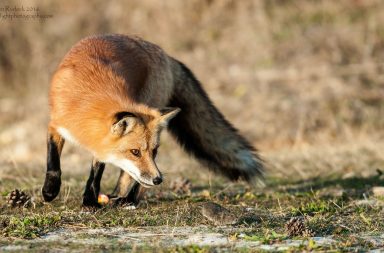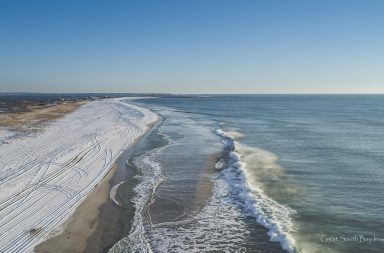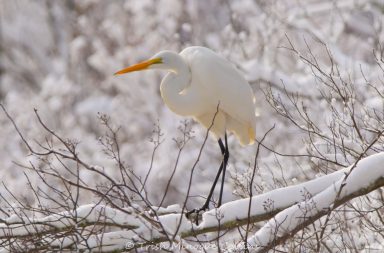NORTHERN GANNET
Watching Northern Gannets feeding offshore is one of the most truly wonderful sights to be seen off the North Atlantic shores. Seeing Gannets circling, then diving dagger like into the ocean for prey – well, only one word comes to mind and that is “spectacular”! If the flock is large and many birds are feeding, “breathtaking” might also be heard.
Gannets are one of the largest seabirds of the North Atlantic, with flight patterns alternating between gliding and powerful wing-beats. They stay at sea most of the year, only coming to land for nesting purposes. They will roost, after feeding, in large rafts on the water. Their diet consists of fish and squid which they spot from on high. (You can also see them circling fishing boats off the coasts…looking for scraps.) It is believed that they can dive to a depth of 50 feet to capture prey and will swim under water for short distances when pursuing their prey. When diving into the water at great speeds (sometimes up to 60 miles an hour) they are protected from the impact by their “torpedo-like” shape and cushioning air sacs under the skin. Their eyes are set more forward on either side of the bill giving them “binocular” vision which helps find prey from the air.
The body of the adult Gannet is almost all white. It has a long, pointed, pale blue-gray bill with a yellow-gold wash on its head and the back of its neck. A long white pointed tail and long wings with black tips, dark legs and webbed feet are other notable marks of this species. Due to the “spear-like” bill and pointed tail, Gannets appear “pointed at both ends”.
This oceanic bird of the North Atlantic nests on cliffs in Labrador & Newfoundland. Gannets breed in large colonies with a pair performing a “dance” at the nest site. Wings are raised and bills are lifted into the air and waved-very much like the albatross’s bill knocking. Nests are made from eelgrass and dirt on an ocean cliff side and one egg is laid and incubated by both sexes. Incubation is 42-44 days with the young being fed by regurgitation for 95-107 days.
Juveniles are altricial (born without feathers and eyes closed) and once the feathers grow in they are very dark. They change from black to “pied white, black, and grey”, and then to all white after three to five years at sea. At that time they return to breed in the nesting areas where they were born.
Gannets get their name from the Anglo-Saxon word “ganot” meaning goose. Fishermen in the 1500s, at “great risk to life”, would collect chicks and eggs from these “goose” for food and medicine.
Gannets migrate South in the fall and winter as far as the Gulf of Mexico and can be seen from our shores during most of the winter months. Good spots to look for Gannets are Montauk Point, the ocean side of Dune Road in Hampton Bays and Shinnecock Canal, and on windy days they have even been spotted on Long Island Sound.
I would like to end with a description written by John James Audubon.
“The flight of the gannet is powerful and at times extremely elegant. While traveling, whether in fine or foul weather, they fly low over the surface of the water, flapping their wings thirty or forty times in succession…and then sailing about an equal distance, with the wings at right angles to the body, and the neck extended forwards….The powerful fisher…high over the water glide silently along, surveying each swelling wave below…the bird intent on filling its empty stomach…plunges headlong through the air, with the speed of a meteor, and instantaneously snatches the fish which its keen sight has discovered from on high.” John James Audubon
So this is the time of year to head on down to the shore and see these magnificent Northern Gannets!

Mike Firestone

Steven Williams

Brian Doherty

Tony Fanni

Brian Doherty

Carole Ryder

Brian Doherty
More Images and Video on Page 2



